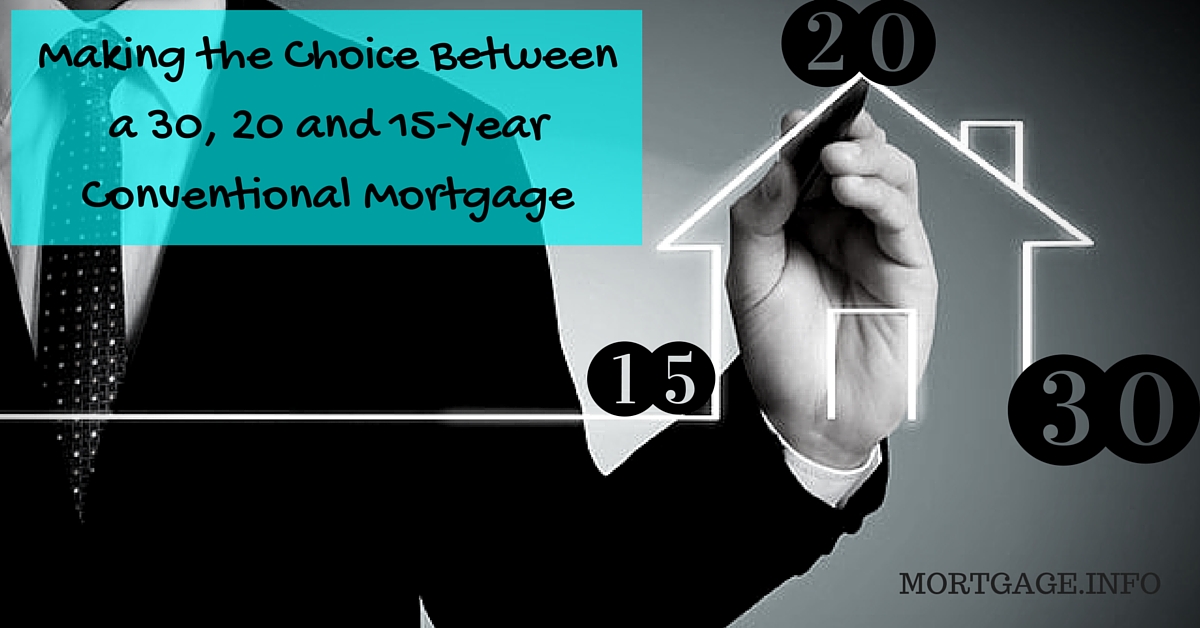 When you apply for a conventional mortgage, it could be second nature to simply ask for the 30-year fixed mortgage, but there are other options. It pays to know the differences between the three options, aside from the obvious difference in time that each loan offers. Many borrowers opt for the 30-year because of its predictability and ease of affordability, but some borrowers can benefit from a shorter time period, making it easier to own the home free and clear much sooner than the 30-year program would allow.
When you apply for a conventional mortgage, it could be second nature to simply ask for the 30-year fixed mortgage, but there are other options. It pays to know the differences between the three options, aside from the obvious difference in time that each loan offers. Many borrowers opt for the 30-year because of its predictability and ease of affordability, but some borrowers can benefit from a shorter time period, making it easier to own the home free and clear much sooner than the 30-year program would allow.
The Amortization Period
The biggest factor to look at is how the loan is amortized over the term of the loan. If you look at a standard amortization table, you will see that you pay the largest amount of interest on a 30-year loan because you are paying those interest charges for 10 to 15 years longer than you would with a shorter term. Because you can pay thousands of dollars in interest every year, those numbers really add up. Many people do not realize just how much they pay until they see it in writing. By law, you have the right to know how much the loan will cost you in the end, which means you will see it on one or more of the disclosures you sign at the closing, but knowing ahead of time can help you make an informed decision.
Different Mortgage Interest Rates
Even if you think you could never afford a shorter term, it is worth looking into simply because a shorter term generally means a lower interest rate. What if the payment on a 15-year loan is smaller than you thought because of the lower interest? You might be able to afford it. Lenders increase the rate on a 30-year conventional mortgage as opposed to a 15 or 20-year program simply because of the higher level of risk of default you pose when you extend the term. The quicker the bank is able to get their money back, the less risky you look to them. Of course, your other factors play a role in the final interest rate you are provided, including your credit score, debt ratio, LTV, and employment history, but all of the pieces of the puzzle fit together to come up with the rate that is just right
for you.
Equity Builds up Faster
Something you probably don’t think about when you first take out a mortgage is gaining equity in the home. Whether you put down the minimum 3 percent required on the Fannie 97 program or you put down the full 20 percent to avoid private mortgage insurance, it will take a while to build up more equity in the home. You have the initial equity that you put into the home with your down payment, but beyond that you typically pay most interest charges in the beginning of the loan payoff period. If you have a shorter term, however, those interest charges are lower and a larger portion of your payment goes directly to the principal, which means you are able to build up equity much faster.
A shorter term is not for everyone, so do not get discouraged if you do not qualify or cannot afford a 15 or 20-year conventional mortgage. If you can afford it, however, it is worth looking into as you stand to save quite a bit of money depending on the loan amount and interest rate you are provided. When you weigh all of your options, you can make an informed decision about what is right for your situation. Remember, every lender has different programs and even different rates based on what risk levels they can take on, so make sure to shop around to find the loan that is right for you.
